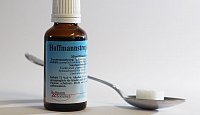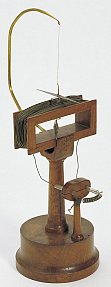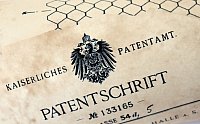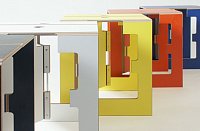Inventions “made in Halle”
Not only were the Halloren invented in Halle …
SARAH HUKE

Hoffmann’s drops: A medicine against nausea, fainting and dizzy spells. It’s inventor Friedrich Hoffmann (1660–1742), one of Europe’s most famous physicians, made the Faculty of Medicine at Halle’s University into a leading academic centre for doctors. (Photo: Maike Glöckner)

Johann Christoph Schweigger has gone down in the history of physics as the inventor of the galvanometer, the first device able to measure electricity. He received a professorship at the university in Halle in 1819 and studied electromagnetism and galvanism. Shortly after the Dane Hans-Christian Oersted discovered the magnetic effects of electricity, Schweigger developed the “multiplier” in 1821. This had a magnetic needle around which a wire was wrapped many times. The magnetic effects of the electricity moved the needle which measured the electricity’s strength (Drawing: Hans-Christian Oersted, Oersted’s Collected Works, Copenhagen 1920) (Photo: Museo Galileo)

Halle’s architect Herbert Müller achieved a “victory for mathematics in construction” in the 1950s through his invention of the hyperbolic paraboloid shell. The mostly wavy roofs were first used in the Neustadt gymnasium which is now a listed building. Thanks to the invention of the saddle-shaped connecting concrete slabs, large areas could be spanned without additional support. (Photo: Corinna Bertz)

The first honeycomb shaped paper net: Hans Heilbrun invented the structure and production process of the expanded paper honeycomb in 1901 and used this for decorative applications in the luxury paper factory of Heilbrun & Pinner, Halle/Saale. The honeycomb cores are an important element for many later developments such as honeycomb panels for sandwich constructions used in the aviation, shipbuilding and aerospace industries. (Photo: Sarah Huke)

Detecting illnesses and prescribing the right therapies. Fluorescent dye kits developed by NH DyeAGNOSTICS GmbH from Halle help to find the protein biomarkers necessary to do this. The biotech company was founded in 2007 by MLU graduate Jan Heise. (Photo: NH DyeAGNOSTICS)

A seat for every occasion: Martin Büdel, Wolfgang Kreser und Achim Hack, graduates of Burg Giebichenstein University of Art and Design Halle, developed the material “3F board” for the stool “folder”. Thanks to the integrated leather fibres, the design objects no longer need any conventional fittings. (Photo: 3F-board)
